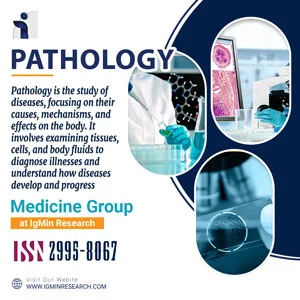Open Access Policy refers to a set of principles and guidelines aimed at providing unrestricted access to scholarly research and literature. It promotes the free availability and unrestricted use of research outputs, enabling researchers, students, and the general public to access, read, download, and distribute scholarly articles without financial or legal barriers. In this response, I will provide you with an overview of the history and latest resolutions related to Open Access Policy.
About
Pathology is the specialized medical field focused on the study, diagnosis, and understanding of diseases through the examination of tissues, cells, and bodily fluids. Pathologists are experts in analyzing the microscopic and molecular changes that occur in various diseases. Their expertise spans from identifying the underlying causes of illnesses to providing critical information that guides patient care and treatment decisions.
The study of pathology involves an in-depth understanding of disease processes, cellular changes, and molecular abnormalities. Pathologists use advanced laboratory techniques, imaging technologies, and genetic analyses to uncover insights into disease progression and prognosis. By collaborating with other medical specialties, pathology plays a pivotal role in accurately diagnosing diseases and guiding personalized treatment strategies.
Medicine Group (5)
Open Access Policy refers to a set of principles and guidelines aimed at providing unrestricted access to scholarly research and literature. It promotes the free availability and unrestricted use of research outputs, enabling researchers, students, and the general public to access, read, download, and distribute scholarly articles without financial or legal barriers. In this response, I will provide you with an overview of the history and latest resolutions related to Open Access Policy.
Open Access Policy refers to a set of principles and guidelines aimed at providing unrestricted access to scholarly research and literature. It promotes the free availability and unrestricted use of research outputs, enabling researchers, students, and the general public to access, read, download, and distribute scholarly articles without financial or legal barriers. In this response, I will provide you with an overview of the history and latest resolutions related to Open Access Policy.
Open Access Policy refers to a set of principles and guidelines aimed at providing unrestricted access to scholarly research and literature. It promotes the free availability and unrestricted use of research outputs, enabling researchers, students, and the general public to access, read, download, and distribute scholarly articles without financial or legal barriers. In this response, I will provide you with an overview of the history and latest resolutions related to Open Access Policy.
Open Access Policy refers to a set of principles and guidelines aimed at providing unrestricted access to scholarly research and literature. It promotes the free availability and unrestricted use of research outputs, enabling researchers, students, and the general public to access, read, download, and distribute scholarly articles without financial or legal barriers. In this response, I will provide you with an overview of the history and latest resolutions related to Open Access Policy.

Why publish with us?
Global Visibility – Indexed in major databases
Fast Peer Review – Decision within 14–21 days
Open Access – Maximize readership and citation
Multidisciplinary Scope – Biology, Medicine and Engineering
Editorial Board Excellence – Global experts involved
University Library Indexing – Via OCLC
Permanent Archiving – CrossRef DOI
APC – Affordable APCs with discounts
Citation – High Citation Potential
Which articles are now trending?
Research Articles
- Sensor-based Sorting using De-XRT Sensor Applied to a Greenfield Copper Ore Project in Southern Brazil
- Properties of Indium Antimonide Nanocrystals as Nanoelectronic Elements
- The Examination of Game Skills of Children Aged 5-6 Years Participating in Movement Education
- Trend of SO2 Gas Dry Deposition in Vietnam
- Efficient Room Temperature Ethanol Vapor Sensing by Unique Fractal Features of Tin Oxide
- Development of a Mechanical Seal Closed Design Model
Advertisement











